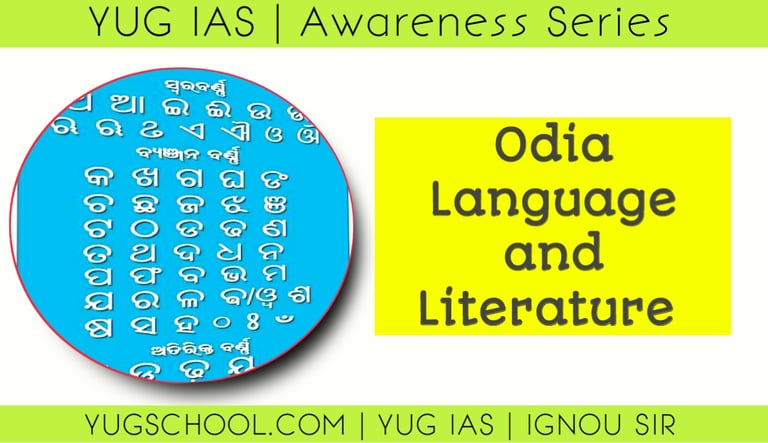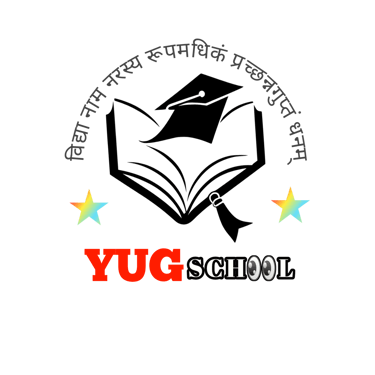Evolution, Growth and Development of Odia Language and Literature
Tracing its roots back to the 8th century AD, Odia has evolved and flourished, becoming a distinct voice within the Indo-Aryan family. Let's delve into its remarkable evolution and the development of its diverse literary landscape
GENERAL STUDIES 1


Evolution and Growth of Odia Language and Literature:
The Odia language and its vibrant literature boast a rich tapestry woven over centuries, reflecting the cultural and historical journey of Odisha. Tracing its roots back to the 8th century AD, Odia has evolved and flourished, becoming a distinct voice within the Indo-Aryan family. Let's delve into its remarkable evolution and the development of its diverse literary landscape:
Early Stages (800 AD – 1500 AD):
*Old Odia (800 AD – 1300 AD): This formative period saw Odia emerge from Magadhi Prakrit, influenced by Sanskrit and local dialects. Early inscriptions and copper plates stand as testaments to this stage.
*Early Medieval Odia (1300 AD – 1500 AD): Odia literature blossomed with religious epics like the "Chhaupadi Mahabharata" and "Vilanka Ramayana." Sarala Das, a revolutionary figure, composed the "Sarala Mahabharata," marking a turning point in literary style and language development.
Golden Age (1500 AD – 1700 AD):
This era witnessed the peak of Odia literature, characterized by:
*Sophistication and Refinement: The language reached its pinnacle of refinement, evident in the works of Jagannath Das ("Bhagavad Gita") and Upendra Bhanja ("Baidehisha bilasa").
*Diverse Genres: Genres like Champu (prose-poetry), Kavya (poetry), and Chhanda (metrical verse) flourished.
*Religious Influence: Vaishnavism deeply impacted literature, with works like "Laxmi Pauran" by Balaram Das and "Rasakavi" by Akhanda Rama Dasa.
Later Stages (1700 AD – 1900 AD):
*Late Medieval Odia (1700 AD – 1850 AD): This period saw a decline in religious themes and a rise in social commentary. Poets like Bhima Bhoi and Fakir Mohan Senapati challenged societal norms and advocated for social reform.
*Modern Odia (1870 AD onwards): The arrival of the British and the printing press brought about significant changes:
*Western Influence: Western literary genres like the novel, drama, and essay gained prominence.
*Social and Political Awareness: Authors like Fakir Mohan Senapati ("Chha mana atha guntha") and Gopinath Mohanty ("Paraja") addressed social issues and political movements.
*Modernism and Experimentation: Poets like Sachi Routray and Manasi Pradhan embraced modernist styles and explored themes like identity and existentialism.
Contemporary Odia Literature:
Today, Odia literature continues to evolve, reflecting contemporary concerns and embracing new forms of expression. Key trends include:
*Globalization and Identity: Writers like Arundhati Patra and Jayanta Mahapatra explore themes of cultural identity in a globalized world.
*Feminist Voices: Authors like Pratibha Ray and Mamata Kumari Jena champion women's rights and perspectives.
*Regionalism and Diaspora: Writers like Manoj Das and Bibhuti Patnaik explore regional experiences and the Odia diaspora.
Development of Odia Literature:
Several key factors have contributed to the development of Odia literature:
Patronage: Royal courts, zamindars, and literary societies provided support and encouragement to writers.
Religious Influence: Religious epics, myths, and rituals served as inspiration for much of early literature.
Folk Traditions: Oral storytelling and folk songs provided a rich source of content and inspiration.
Social and Political Movements: Social movements and political struggles influenced themes and narratives.
Translations: Translations of world literature exposed Odia writers to new ideas and forms.
Educational Institutions: Universities and literary organizations played a crucial role in promoting and preserving Odia language and literature.
Challenges and Future Prospects:
Despite its rich legacy, Odia literature faces challenges like:
Limited access to publishing and translation opportunities.
Competition from dominant languages like English.
Need for greater digital literacy and accessibility.
Encouraging younger generations to engage with the language and literature.
